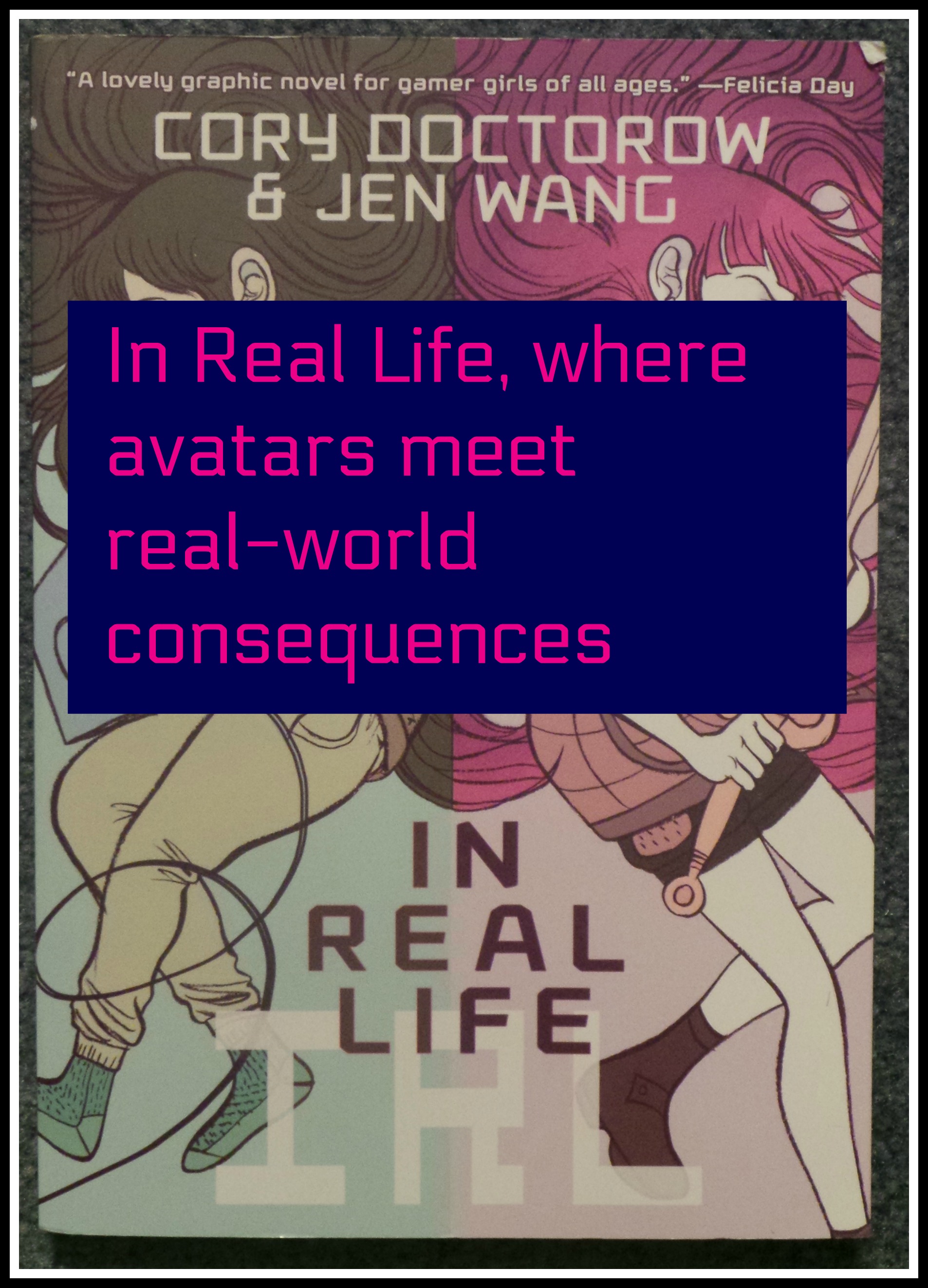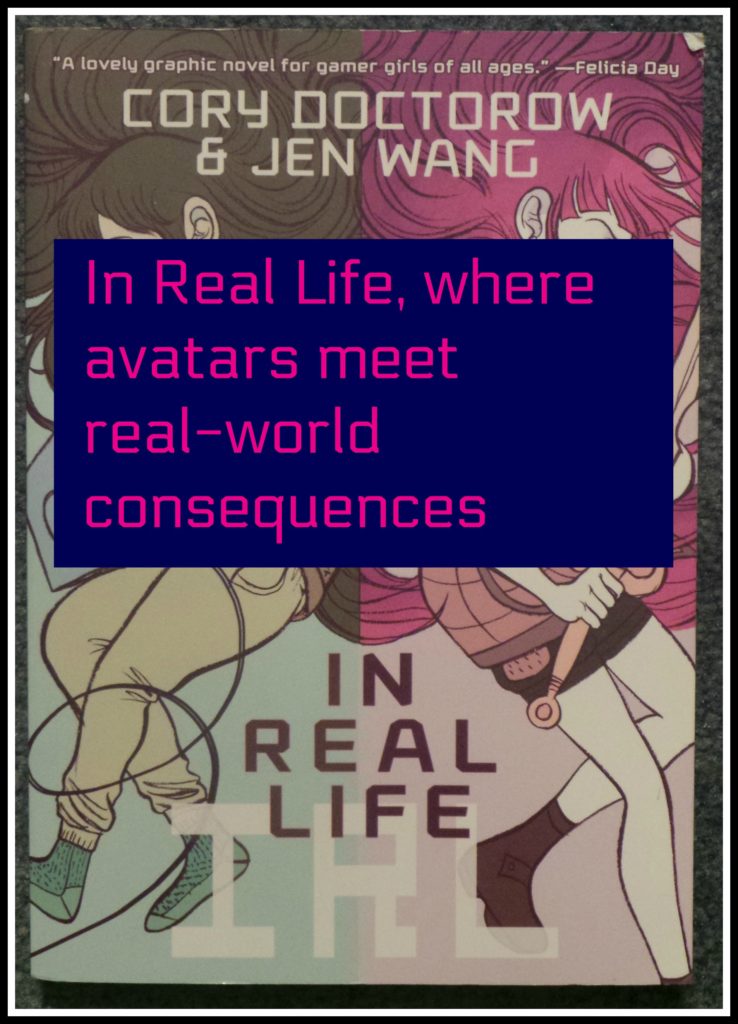Video games when I was a kid were simple on so many levels. It was just me and a friend, at his house, because he had an Atari and my parents wouldn’t let me have one. It’s a whole new world now and In Real Life is a graphic novel by Cory Doctorow with art by Jen Wang that examines the relationships and economics that takes place in-and out of video games. It’s the trinkets, jobs or vehicles that players can purchase with real money whilst playing the game. In Real Life takes a look at the sub-culture of those that sell things in games who are usually in impoverished conditions in emerging markets; as well as the different levels of players who take part in the game.
My overview of the online gaming scene is probably too wordy and anyone over ten was rolling their eyes and thinking that middle age must truly suck. Not knowing what’s going on in the gaming world is truly the curse of some parents all over the world.
Having said all of that, In Real Life is a treat to read, and much like most of today’s video games I’m not the target audience. This graphic novel is custom made for gamer girls aged 11 and up. The content is appropriate for ages 9 and up, but they might not be able to relate to the range of emotions, experiences or what older kids are allowed to do by their parents.
Anda is an upper middle school (or possibly lower high school) girl whose computer class at school has a guest speaker. This speaker organizes a very large multiplayer role playing game and is there to encourage girls to play. It’s interesting that when she asks the girls in the class if they game they all raise their hand. She then asks the same girls who plays the game as a girl avatar and none of them raise their hand.
From here Anda gets her mom’s permission to play the game-so long as she assures her that it will only be with age appropriate girls. The issue of unwanted or pervy behavior is also tacitly addressed by another one of the players in a real manner that kids would handle it and parents would approve. While playing the game Anda is introduced to farmers, the underbelly of MMO (massive multiplayer online game) that allows players with money to shorten the game.
What I didn’t know is that time and money can impact how games are played. One can play a game for five months to accrue credit or earn things, or they can buy them earlier in the game to jump over levels. It’s those that live in poor situations that spend hours upon hours playing the games to earn those credits, which are then sold to richer kids playing the games elsewhere.
The quandary for Anda and her main friend/competitor in the game is how they handle the discovery of these farmers. The farmers are real people earning a very meager living by playing the game. They’re also some of the same characters that Anda and others are trying to kill in the game.
What’s impressive about In Real Life is that it manages to make readers care about the real people behind the virtual world of video games. Girls especially will enjoy the bonding, friendship and mine field that is being a teen age girl with all of their complexities. In Real Life also does a good job in blending the real life to the virtual world. Even non-gamers will understand and be able to relate to the avatars, their subtle personality traits shared with the real person and more. If you’re a girl who likes graphic novels then In Real Life is your digital jam.






 Facebook
Facebook Twitter
Twitter Flickr
Flickr GooglePlus
GooglePlus Youtube
Youtube